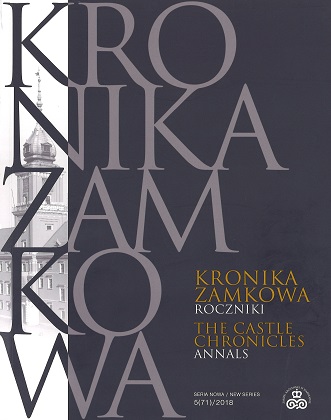Dostawy mozańskiego kamienia budowlanego na wschodnie tereny dawnej Rzeczypospolitej w 1. połowie XVII w.
Supplies of building stone from the estuary of the Meuse to eastern borderlands of the former Polish-Lithuaninan Commonwealth in the 1st half of the 17th c.
Author(s): Ryszard SzmydkiSubject(s): History of Art
Published by: Arx Regia® Wydawnictwo Zamku Królewskiego w Warszawie – Muzeum
Keywords: Sigmund III; Netherlandish marble; Zbarazh; St. Casimir’s Chapel in Vilnius; Willem Mertens the Elder; Jacob Reyersz. Block; Hendrick von Peene; Laurent Pietersoon Swijs
Summary/Abstract: Before his election, Sigmund III pledged to build five fortified castles on the eastern borders of the Polish-Lithuanian Commonwealth. However, meeting these promises was hard for financial reasons. In addition, there was no adequate building material. Only in 1626 did the king decide to commence construction. Stonemasons from the Netherlands, from Amsterdam, helped ship to Poland substantial amounts of stone from the Meuse estuary, e.g. black and red marble from the famous quarries near Namur. It follows from the diplomatic correspondence, discovered in the archives of Brussels and the Hague, between Sigmund III the regent of the Southern Netherlands in Brussels Infanta Isabella and the government of northern United Provinces of the Netherlands in the Hague, that in the period 1626–1629 a famous stonemason from Amsterdam, Laurent Swijs, was entrusted with shipping to Poland stone from the estuary of the River Meuse; the material was used for the architectural furnishings of the Royal Castle in Warsaw. In turn, Pieter Adriaen van Delft supplied construction material from that very region to the eastern borderlands of the former Commonwealth, e.g. to Zbarazh, in line with Sigmund III’s pledges made in his pacta conventa. Architects of fortifications from the Netherlands were highly acclaimed in Poland. One of them was Hendrick von Peene, who came from southern Netherlands at the invitation of Jerzy Zbaraski.
Journal: Kronika Zamkowa. Roczniki
- Issue Year: 5/2018
- Issue No: 5
- Page Range: 45-60
- Page Count: 16
- Language: Polish

